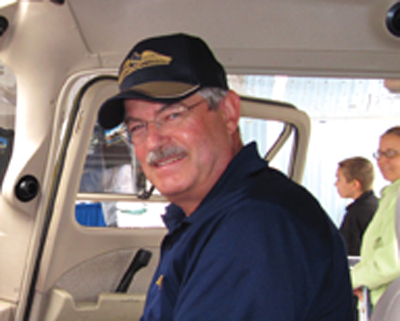
Features
Operations
An insider’s outlook: Q & A
WINGS recently sat down with Kevin Psutka, COPA’s president and CEO, to discuss the key issues facing general aviation. Access to airports, security restrictions, airspace limitations and the aging pilot population were top of mind during our discussion.
January 18, 2010 By Frederick K. Larkin
WINGS recently sat down with Kevin Psutka, COPA’s president and CEO, to discuss the key issues facing general aviation. Access to airports, security restrictions, airspace limitations and the aging pilot population were top of mind during our discussion.
 |
|
Highlights of the Question and Answer session include the following:
Q| Could you describe COPA’s role within the general aviation (GA) community?
A| First, GA is all aviation activity that is not airlines or military. This includes, for example, medevacs, flight training, police, fire fighting, and, oh yes, personal aviation. Personal aviation, which COPA represents, is that portion of GA where aircraft are flown for personal transportation and recreation. Like a family car, it is a form of transportation for thousands in Canada.
Q| Given that the number of airports in Canada is slowly contracting, what actions might be taken to assure that private aircraft operators retain meaningful access to key airfields over the next 10 years?
A| Regarding security, designate and develop areas of an airport that are physically separate from airline operations and make them subject to reasonable levels of security so that GA can continue at these airports. Regarding fees, recognize the relatively minor impact that GA has on the infrastructure and therefore charge reasonable fees for this incremental use. Regarding access, provide runway approach and departure procedures that safely accommodate GA aircraft for minimal interference with airline operations. Ottawa International is an excellent example of the latter point, where a separate runway provides for complementary operations.
Q| Do you see the level of security tightening further down the road?
A| As long as the world continues on its current path, I am afraid that we will see increasing pressure, be it from irresponsible media hype to create paranoia or from actual terrorist acts or threats, that will result in additional layers of security being imposed. The recently-introduced eAPIS program for entering and exiting the U.S. by small aircraft is just one example of things to come. Our government refused to get involved in negotiations with the U.S. government to reduce the requirements. I believe that this is in part due to a lack of understanding on the part of the security authorities of the contribution of GA to our economy and the negative impact that increasing security will have on our economy.
Q| Given Canada’s demographics, what degree of reduction do you foresee in the pilot population over the next 20 years?
A| I do not have a firm number, but it is reasonable to assume that if nothing is done to encourage people to get into this field, there will be a significant decline from the baby boomers retiring and few young people coming into the system. An additional factor is our changing population. Many immigrants come from countries where GA does not exist and therefore it may not occur to them that aviation is available as a career, a form of transportation or hobby. We all have a role to play in making the public aware of aviation, its importance and its potential so that these new Canadians can appreciate, support and engage in aviation.
If our changing demographics are not enough to deal with, a major contributing factor is airport and flight training school closures that are making it increasingly difficult to get training and then to engage in flying. We have lost a number of flight schools in recent years. Young people need conveniently located training facilities in order to reduce their overall costs, including accommodation and transportation to and from the facility.
Q| What incentives might be employed to encourage the expansion of flight training activities?
A| Decades ago the federal government encouraged people to get into aviation by providing rebates on their training. We need to return to this incentive program. In addition, although there is some minor tax relief for training costs, it should be broadened to make aviation training a more financially achievable option for young people.
Q| What do you think Canada’s GA scene will look like in a decade?
A| That entirely depends on whether or not municipal, provincial and federal governments realize that, in order for aviation in general to be healthy and continue to contribute to Canada’s quality of life, general aviation must be healthy. The pilots and mechanics for the airlines come from GA. From GA airports that are so vital to the air transportation system come many of the passengers and cargo to feed the hubs. Without the lower end, the upper end will suffer.